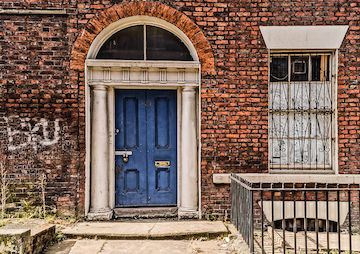To Rebuild Baltimore, First Clear the Blight
There has been much talk about the maladies that afflict Baltimore. One of the most visible should also be one of the most straightforward to address: its enormous stock of derelict, abandoned housing. Bev Goodwin (CC BY 2.0)
Bev Goodwin (CC BY 2.0)
BALTIMORE — This city needs to be built up again, but first a lot of it ought to be torn down.
There has been much talk, following Monday’s night of rage, about the social maladies that afflict this city. One of the most visible should also be one of the most straightforward to address: Baltimore’s enormous stock of derelict, abandoned housing. Federal, state and local officials should work together — now — to eliminate this blight.
I spent part of Tuesday at the intersection of W. North and Pennsylvania avenues, outside the CVS drug store that had burned the night before. A few hundred people were milling around; many had brought brooms to clean up the broken glass and other debris that littered the neighborhood. Those I talked to had a lot to say about the rioters, the Baltimore police department and the mystery of how Freddie Gray suffered a fatal spinal injury while in custody. I heard much about failing schools and long-disappeared jobs.
On the way back to my car, I walked past an example of something no one had mentioned: a string of a half-dozen crumbling row houses that had long been unoccupied. Now they were decrepit shells, unfit for human habitation. Doors and windows were boarded up, more or less, though it looked as if at least a couple of the houses had been occupied by squatters.
This is all too common in Charm City. In 1950, Baltimore was the sixth-largest city in the country with a population of about 950,000. Bethlehem Steel was the biggest employer in a blue-collar, industrial town. Homeowners took pride in keeping their row houses tidy and their marble stoops scrubbed to a gleam.
Today, the factories are mostly gone; the biggest employer is Johns Hopkins University. Just 622,000 Baltimoreans live in a cityscape built to accommodate nearly a million — which means that amid the well-kept homes there are 16,000 vacant houses and roughly 14,000 empty lots. The area that saw the worst rioting this week is far more intact than some neighborhoods, where whole blocks of row houses are dead but not gone.
This oppressive inventory of unused — and mostly unusable — housing is both dangerous and depressing.
Drug dealers find convenient places to conduct business; gang members have hideouts to cache weapons and contraband; children must be kept away from buildings where rotting porches and sagging floors may be ready to collapse. Blighted housing sickens, and ultimately kills, whole neighborhoods.
Almost as important, I believe, is the psychological impact of living amid such decay. Baltimore is a proud, historic city that deserves to be known for its grit, not its rot.
Mayor Stephanie Rawlings-Blake has declared abandoned housing a priority, and a new law gives the city greater latitude to board up derelict properties and force their sale. But plywood is not the ultimate solution. Although the population seems to have stabilized, no one thinks Baltimore will again be home to nearly a million souls anytime soon.
Detroit went through an even more dramatic process of depopulation, from 1.8 million residents in 1950 to just under 700,000 today. But that city is finally beginning to recover, and one big step along the right path has been demolishing vacant housing and turning much of the land into urban green space.
As of last fall, Detroit was tearing down as many as 200 vacant houses each week. At a similar rate, Baltimore could eliminate its abandoned housing within a couple of years. Each demolition costs money, however — in Detroit, a reported $15,000 on average — and Baltimore doesn’t have that kind of cash lying around.
That is where the state and federal governments must come in. Are officials in Annapolis and Washington serious about helping inner-city Baltimore escape its suffocating poverty, dysfunction and despair? Reforming schools, renovating infrastructure and creating jobs are necessary grand projects that will take time. Meanwhile, with the needed funding, a greatly intensified campaign to tear down ruined, abandoned housing stock could be launched tomorrow.
I don’t pretend this is an uncomplicated issue. In Baltimore, several residents told me of their fear that gentrification would inexorably push African-Americans out of the homes and neighborhoods where their families have lived for generations. Bulldozers are not always popular.
But at this point, they are necessary. Blighted housing is not Baltimore’s only problem, perhaps not even its biggest problem. But demolition is something beneficial that can be started right now. All that’s required is the will, and of course the money.
Eugene Robinson’s email address is [email protected].
© 2015, Washington Post Writers Group
Your support matters…Independent journalism is under threat and overshadowed by heavily funded mainstream media.
You can help level the playing field. Become a member.
Your tax-deductible contribution keeps us digging beneath the headlines to give you thought-provoking, investigative reporting and analysis that unearths what's really happening- without compromise.
Give today to support our courageous, independent journalists.





You need to be a supporter to comment.
There are currently no responses to this article.
Be the first to respond.